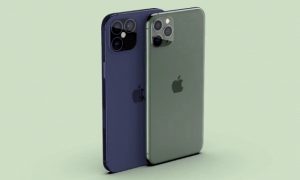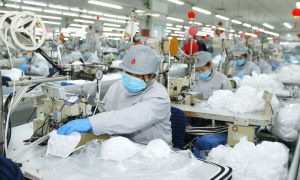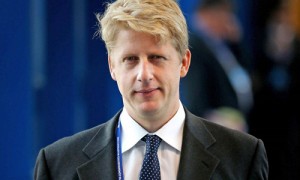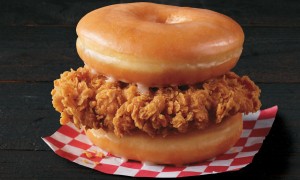Through it all, however, one immutable truth endured: Soccer cleats were black.
Yes, maybe there was the odd white stripe. Even a logo or two. But starting on Thursday, even casual fans will notice something different during the World Cup in Brazil as they watch the feet of the players fight over control of the ball. These days, the only ones still wearing black cleats are the referees. Everyone else looks as though he got into a fight with a rainbow.
“I don’t even get surprised by any of the colors anymore,” said Luis Suárez, the star striker for Liverpool, who will lead Uruguay’s team in Brazil. “I’ve seen pink, green, everything. When I was a boy, there was no question, the boots were black.”
He laughed. “I think everyone now knows those days are over.”
After the 2010 World Cup, when most players stuck to the basics, the European Championships in 2012 offered a hint of the game’s palette expansion. But the major shoe companies have planned a veritable parade of pigment for Brazil. The names sound like smoothie flavors: metallic Mach Purple, Prism Violet, Earth Green, Solar Slime (it looks sort of like lemonade). Nike’s new shoes, which will be worn by stars like Portugal’s Cristiano Ronaldo, have bold pinks and yellows, as well as a sock-type insert in some models that reputedly provides more ankle support.
Adidas’s freshest models, which will be on the feet of Argentina’s Lionel Messi, among others, are a sort of mottled, fluorescent-lizard-style shoe that blares loud blues and oranges. Puma appears to be going for an odd, gender-neutral sort of statement. Its new line features a design in which one shoe in each pair is pink while the other is blue.
“Personally, I always liked the all-black — I thought they were sleek,” said Jozy Altidore, a United States forward who endorses Adidas. “But we all know the importance of marketing, and so, to be honest, I just wear whatever they send me.”
This is a common refrain. As wonderful as the players may feel about the opportunity to better express their inner chameleon, fashion anywhere is a business, and there has been a tangible trickle-down effect in soccer. General sales for colored shoes have skyrocketed among amateur and youth players in recent years, and the shoe companies are adapting to the changing tastes. According to an Adidas spokesman, more than 80 percent of the cleats offered by the company during the spring/summer period this year were “color-based or accented by bright pop colors.”
“It’s a fashion show at the World Cup,” said Antonio Zea, director of soccer innovation at Adidas. “A kid wants to be Messi. A kid wants to be Beckham. We understand that. We know what it means for them to see the stars wearing something.”
Denis Dekovic, the soccer design director at Nike, said that while relationships with professional players are important, “our focus is on the younger players. We want the future.”
It is difficult to pinpoint when colored cleats broke through. Mr. Zea said that Adidas often points to 1996, when Bolivia’s Marco Etcheverry routinely wore a red version of the seminal Predator cleat.
Mr. Dekovic noted that up until the late 1990s, shoe designers were restricted with regard to colors because of the materials available to them. Kangaroo leather, which was preferred for cleats, was difficult to dye without compromising its integrity, so “it was pretty much black or white or maybe a little red,” he said.
In 1998, when Brazil’s Ronaldo wore Nike’s new Mercurial cleat, it was a breakthrough for the company on multiple levels: The colors were silver and blue, and the material was synthetic. “There has always been a desire to break the rules,” Mr. Dekovic said. “It is even more now. Players today have strong personalities, and the only way to show their personality is through the boots because everything else they wear has to be a uniform.”
That notion of individuality has become the preferred, less-cynical narrative for the new array of colors. (“Money, money, money” also makes for poor commercials.) And to some degree, it is true: The panoply of new shades allows players to make some choices. Stout defenders have often preferred a more solid, traditional tone, while playmakers and splashy strikers typically go for the bolder hues.
“I quite like the reds,” England midfielder Jack Wilshere said. Mr. Suárez, the Uruguayan, said the daring colors make him “feel more lively.”
Alexi Lalas, the former defender for the United States whose goatee and red hair made him a standout in a more staid era, recalled that in 1994, he approached the United States coach, Bora Milutinovic, the day before a game to ask about wearing white shoes during the match.
“We were playing in Seattle and it was an artificial turf field, so I had these white racquetball shoes I wanted to wear instead of cleats,” Mr. Lalas said. “He looked at them and frowned and said, ‘You better play well in those things.’ ”
Mr. Lalas scored a goal that day, he noted, but still heard some comments from other players. These days, he said: “It would be hipster, an all-white shoe. It’s like bell-bottoms, it all comes back around.”
Not all players are so enamored with the new colors. Zlatan Ibrahimovic, the Swedish star whose team missed out on qualifying for Brazil, said he believes the bright colors hurt attacking players because assistant referees are more likely to notice if they are marginally offside. “With a black shoe, you can push it a little more,” he said.
And Daniele De Rossi, the longtime Italian midfielder, said he prefers to think back to the days when life, and soccer shoes, were simpler. “I love seeing the pictures of me as a kid wearing black,” he said. “It is almost too much now; you wonder where the designers will ever end.”
He sighed. “Every time a new box comes I think, ‘What’s next, maybe a boot with wings?’ ”
据《纽约时报》网站报道,近几年来,足球经历了一些值得纪念的,或者更多是一些昙花一现的风尚。一度热裤式的短裤,奇异的宽松肥大的球衣,大黄蜂黄黑条纹式短袜(不要与保暖型的短袜混淆)很流行,在体育时尚低迷期还短暂流行过紧身球衣。
凡此种种,不变的流行是黑色的球鞋。
确实有时会出现不多见的白色鞋带。或是一两个白色的商标。但从星期四开始,即使不是狂热的球迷也会注意到巴西世界杯球场上的一些不同。现在,只有裁判才会穿黑色的球鞋。其他的球员都会穿不同颜色的球鞋,就像刚和彩虹战斗过那么显眼。
“现在我看到任何颜色的球鞋都不会感到吃惊。”利物浦的明星前锋苏亚雷斯说,他将会带领乌拉圭进军巴西世界杯。“我见过粉色绿色各种颜色,在我小时候这是不可能的,所有的鞋都应该是黑色的。”
他笑着说,我想所有人都应该知道那个年代已经过去了。
2010年世界杯后,当时大多数球员还是遵循着常规,2012年的欧锦赛给球场的调色盘加了一些色彩。但是大型的球鞋公司为巴西世界杯提供了真正的色彩选择。一些色彩听起来像是沙冰饮料的口味:金属紫,幻彩紫,大地绿,金黄色(看起来像柠檬黄)。耐克的新品有耀眼的粉红和黄色,还有像鞋垫一样的插片,听说可以为脚腕提供更好的支撑,葡萄牙的C罗还有其他一些球星会穿Nike今年的新品。
阿根廷的梅西会穿上阿迪达斯今年的新款。其他的新款还包括一些色彩斑驳的,荧光色蜥蜴纹,明亮的蓝色和橘色的款式。彪马今年的流行趋势是怪异的中性的风格。这一季的新款主要是不同色的系列,比如一只是粉色的另一只是蓝色的。
“个人而言我一直倾向于黑色, 因为我觉得黑色很时髦,”美国队前锋阿尔蒂多(Jozy Altidor)说, 他为阿迪达斯代言。“但我们都清楚市场的重要性,所以老实说,他们送给我的我都穿。”
这种现象很正常。像球员觉得更好的表现他们的内在让他感觉很棒一样,时尚无处不是商业,在足球圈里也能看到渗透式效应。带色彩的球鞋很受业余爱好者和年轻球员的青睐,销量普遍显著上升,球鞋公司因此也为适应市场需求迎合消费者口味。 阿迪达斯的一位发言人说,公司今年春夏款的球鞋超过80%都是带有亮色的。
“今年的世界杯会像是一场时装秀,”阿迪达斯的足球创意总监安东尼奥(Antonio Zea)说。“一个孩子想成为梅西,另一个想成为贝克汉姆。我们理解他们。我们知道当他们看到喜欢的明星穿着什么会给他们带来怎样的影响。”
耐克的足球创意总监德科维奇(Denis Dekovic)说,与职业球员密切关联是重要的,“但我们也关注年轻的球员,因为我们要的是将来。”
很难说彩色球鞋的风潮是何时引入的。安东尼奥说阿迪达斯认为是1996,当时玻利维亚的马尔科·埃切维里(Marco Etcheverry)总是穿一双鲜红色的猎鹰球鞋。
德科维奇说上世纪90年代后期之前,球鞋设计者往往被局限于颜色是因为材料的限制。袋鼠皮很适合用来做球鞋,但因为很难上色的特性很难染色,所以当时球鞋的颜色非黑即白,或者偶尔有红色。
1998年,巴西的罗纳尔多穿上耐克的新作——一双银色的球鞋,对公司来说是一个多方面的突破:球鞋的颜色是银色和蓝色的,而且用了合成的材料。我们一直渴望打破常规,德科维奇说, 现在更是这样。 如今的球员有更鲜明的个性,唯一可以用来表明他们的个性的装束就是球鞋,因为其他的装束必须一致。
对个性的追求让新的色系更加令人喜爱。(钱字当先也会破坏商业)在一定程度上, 一系列的色彩给了球员一些选择,这倒是真的。强壮的守门员会比较偏向更饱和传统的色彩,而中场或前锋会更喜欢鲜亮的色彩。
“我很喜欢红色。”英格兰的中场威尔希尔(Jack Wilshere)说。苏亚雷斯说鲜艳的色彩让他觉得更活跃,他是乌拉圭人。
拉拉斯(Alexi Lalas)回忆说, 1994年,在比赛的前一天,他曾找过美国队教练米卢(Bora Milutinovic),问他能不能在比赛时穿白色的球鞋。拉拉斯是过去美国队的后卫,他的山羊胡和红发让他在一个传统的时代里脱颖而出。
“我们当时在西雅图比赛,球场是人造的绿茵,所以我想穿白色的碎钉球鞋而不是黑色钉鞋。”拉拉斯说,“他皱着眉看着我然后说,你最好还是穿黑球鞋。”
拉拉斯先生那天进了一球,但还是听到来自其他球员的一些评论。近年来,他说,白球鞋是很时髦的,就像喇叭裤,会重新流行起来。
然而也不是所有的球员都喜欢新色彩。瑞典的明星球员伊布(Zlatan Ibrahimovic)说他觉得鲜艳的颜色反而会不利于球员,因为如果他们有一点点越位助理裁判会更可能注意到。但如果穿着黑球鞋的话,你再过分一点也没关系。他的球队没能获得进巴西世界杯的资格。
意大利的中场德罗西更喜欢球鞋和生活都更加简单的过去。我喜欢看着过去我穿着黑球鞋的照片,他说,现在一切都做的太过了,你会想那些设计师什么时候才能停止。
他感叹道:“每当收到一个新盒子我就会想,这又是什么,难道会是一双带翅膀的球鞋?”







